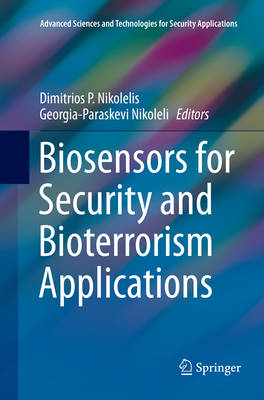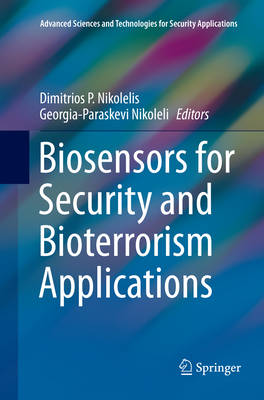
- Afhalen na 1 uur in een winkel met voorraad
- Gratis thuislevering in België vanaf € 30
- Ruim aanbod met 7 miljoen producten
- Afhalen na 1 uur in een winkel met voorraad
- Gratis thuislevering in België vanaf € 30
- Ruim aanbod met 7 miljoen producten
Zoeken
Biosensors for Security and Bioterrorism Applications
€ 208,45
+ 416 punten
Omschrijving
This book offers comprehensive coverage of biomarker/biosensor interactions for the rapid detection of weapons of bioterrorism, as well as current research trends and future developments and applications. It will be useful to researchers in this field who are interested in new developments in the early detection of such. The authors have collected very valuable and, in some aspects indispensable experience in the area i.e. in the development and application of portable biosensors for the detection of potential hazards. Most efforts are centered on the development of immunochemical assays including flow-lateral systems and engineered antibodies and their fragments. In addition, new approaches to the detection of enzyme inhibitors, direct enzymatic and microbial detection of metabolites and nutrients are elaborated. Some realized prototypes and concept devices applicable for the further use as a basis for the cooperation programs are also discussed.There is a particular focus on electrochemical and optical detection systems,including those employing carbon nanotubes, quantum dots and metalnanoparticles. The authors are well-known scientists and most of them are editors of respected international scientific journals. Although recently developed biosensors utilize known principles, the biosensing devices described can significantly shorten the time required for successful detection and enhance efforts in more time-consuming directions, e.g. remote sensing systems and validation in real-sample analysis.The authors describe advances in all stages of biosensor development: theselection of biochemical components, their use in biosensor assembly, detection principles and improvements and applications for real sample assays.
Specificaties
Betrokkenen
- Uitgeverij:
Inhoud
- Aantal bladzijden:
- 508
- Taal:
- Engels
- Reeks:
Eigenschappen
- Productcode (EAN):
- 9783319804576
- Verschijningsdatum:
- 25/04/2018
- Uitvoering:
- Paperback
- Afmetingen:
- 155 mm x 24 mm
- Gewicht:
- 881 g

Alleen bij Standaard Boekhandel
+ 416 punten op je klantenkaart van Standaard Boekhandel
Beoordelingen
We publiceren alleen reviews die voldoen aan de voorwaarden voor reviews. Bekijk onze voorwaarden voor reviews.







